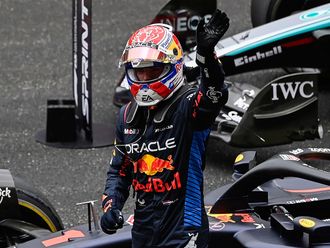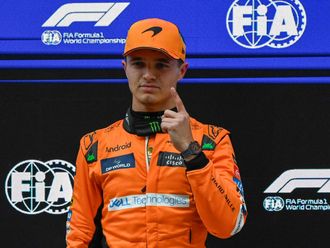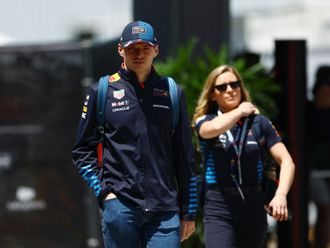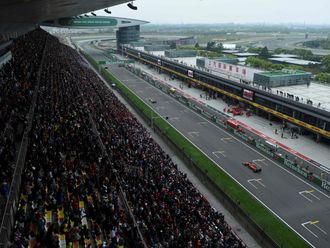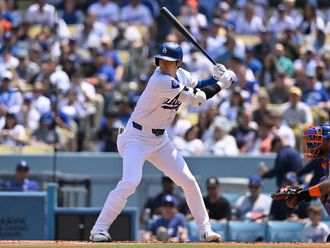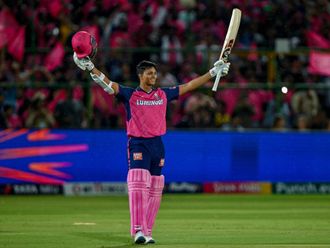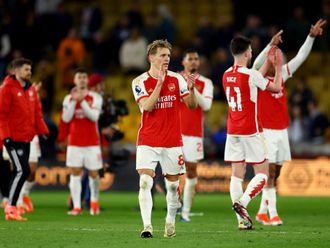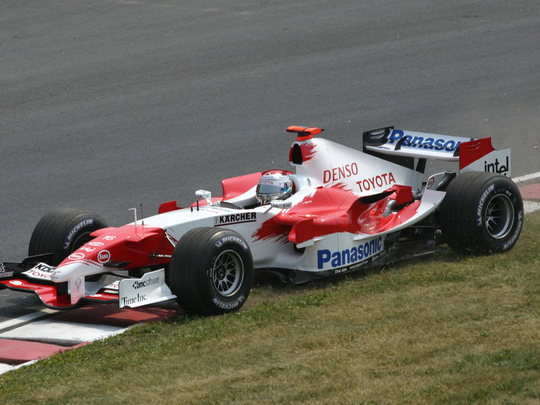
So, after having sold their remaining stake to Genii Capital at the end of 2010 and vowing to only supply engines in Formula 1, Renault seem to be on the verge of buying back the team they sold.
The French manufacturer, much like Honda, have come and gone from Formula 1 over the last few decades. Renault entered F1 as a constructor in 1977 and is credited with the creation of the popular turbo era. They enjoyed a great deal of success, but withdrew their racing team at the end of 1986. They became an engine supplier thereafter and dominated the 1990s with Williams and, for 1995 at least, Benetton.
They dropped out of F1 completely after Jacques Villeneuve won the 1997 World Championship. However, in 2000 they took control of Benetton and rebranded the team as Renault F1 for the 2002 season. Again they enjoyed success in 2005 and 2006 with Fernando Alonso.
For 2010, the nationalised French giant sold a 75 per cent share to Genii Capital, and a year later sold the rest. The team became Lotus GP (not Team Lotus) and Renault was once again just an engine supplier. They scaled back involvement stating that they could, effectively, no longer afford to run a race team. Meanwhile, Red Bull won four driver titles and four constructor titles with Renault power between 2010 and 2013.
And now they’re coming back again.
Honda has a similar history, popping in and out of the sport as either a team or an engine supplier. They have enjoyed immense success as well as underperformance and, as far as this year is concerned, a cataclysmic, apocalyptic disaster.
But no matter.
Things are going to get better for these two firms, which is more than can be said about Gene Haas and his new F1 team, which are due to join the grid in 2016.
This week, Haas’s team principal, Gunther Steiner, told Autosport that all was well and that his brand new team were on course. He said: "The factory in Danbury should be finished in four weeks and the machine pattern work for the chassis will be done in the next two weeks. The schedule is very tight, but it's the same for everybody. Ferrari does not sign off its car off before March and we go with their schedule. In the end, we will get to the first test.”
Is it me, or does everything about that statement suggest impending peril? When was the last time a proper new F1 team joined the sport and made a success of it?
You may recall that for the 2010 season four new teams were granted entry permits into the Formula 1 World Championship: Team Lotus, Manor, Campos, and USF1. These four teams entered the sport on the understanding that Max Mosely’s €40 million annual budget cap would be adopted. It wasn’t, and the existing teams continued to spend upwards of €140 million…
USF1 didn’t even build a car and folded before the season started, Campos couldn’t afford to do it and sold his entry and the team became the appalling Hispania Racing Team (HRT). Manor had to sell to Richard Branson’s Virgin brand which then sold it to Marussia. And Tony Fernandez’s Team Lotus was a farce from start to finish – not least because there were two Lotus teams. He had to rebrand as Caterham and left a trail of financial chaos in his wake. Only Marussia remain, and only just after being yanked from the fire at the 11th hour last year.
Starting a new team in the modern age of Formula 1 is a death wish, that’s why the teams you see racing today may have different names and colours, but they are actually all inbred. The current Lotus team used to be Renault, and before that Benetton, and before that Toleman, which started in 1980.
Mercedes were Brawn for a year, which took over from Honda, which took over from BAR, which was born from Tyrell, who started in F1 in 1968.
Red Bull Racing bought Jaguar in 2005, which took over from the Stewart team in 2000, whose first year was 1997.
Then we have Force India. Vijay Mallya bought the remnants of the team from Dutch automaker Spyker in 2008, which had purchased the woeful Midland team midway through 2006. Midland bought Eddie Jordan’s Jordan team in 2005. Jordan’s first season in Formula 1 was 1991.
Torro Rosso, the Red Bull junior team, used to be Minardi. Which itself was a mix-match of Paul Stoddarts F3000 team and other F1 minnows from the 1990s such as Fondmetal. Minardi entered F1 in 1985.
Sauber, who started in 1994, sold up to BMW in in 2006. However after BMW’s withdrawal in 2009, Sauber bought the team back.
Only Ferrari, McLaren, and Williams have “stayed themselves”, starting in 1950, 1966, and 1977 respectively.
Ok, one could argue that the Haas team has been running in IndyCars and NASCAR for years, and that is indeed true. But they are now entering the snake pit of F1. Their first race is in six months time, their factory isn’t ready yet (which, by the way, is in the US and not Europe), they don’t have a title sponsor, they won’t even get their new Ferrari engines until March and, worst of all, their chassis is being built by Dallara.
The Haas factory isn't ready yet, according to team principal Gunter Steiner
Dallara have a dreadful record in Formula 1. Their last appearance was as the chassis maker for HRT, and look how that went. Before that they made the chassis for the oft-forgotten BMS Scuderia Italia team between 1988 and 1992. Despite two third places, the car was a joke.
But is money the answer? Well I’m not so sure. You may remember a small manufacturer called Toyota entered a brand-spanking new Formula 1 team in 2002 with a budget that would be the envy of a developing nation. However, in 2009 the team pulled out due to lack of success. After 140 races, the best they managed to do was a solitary second place and eight third places. They finished fourth in the Constructor Championship in 2005. That was as good as it got.
Indeed, Renault may have many of us flummoxed by their decision to buy back the team they sold only a few years ago after claiming it was no longer financially viable (in the aftermath of “Crashgate", I hasten to add). But at least they’re not starting from scratch.
The situation with Haas, though, goes deeper than just wanting to be on the F1 grid. The US is a key market that F1 needs to conquer. At the moment, it is no where near as popular as NASCAR or IndyCar. If the American public are going to get involved with F1, then they want a successful team to support. If things go badly for Haas, F1's job of breaking into America takes another hit.
If Haas wanted a better chance of success, then surely it would have been better to buy the poor old Manor-Marussia team? To pick up an existing infrastructure is far safer than starting from nothing, no? It would have also meant they had a European base, which is key for so many reasons. Not least attracting the right expertise.
Tell you what, come back to this blog in 12 months, and if Haas has scored a point, I will eat my shoes.


